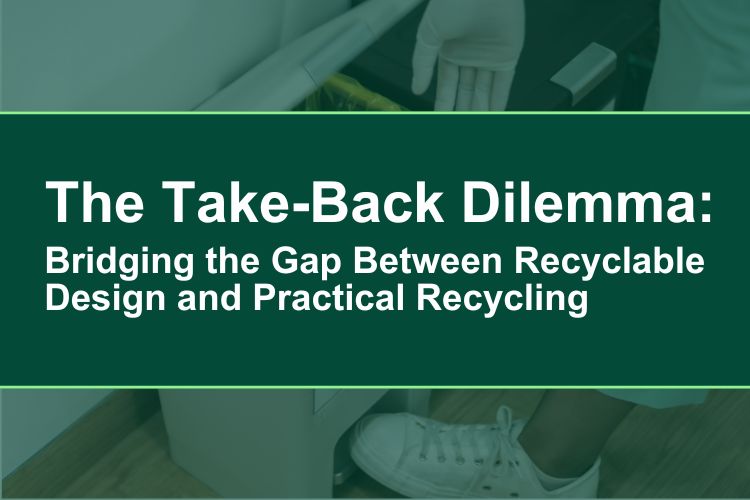In recent years, the EU and UK have made substantial efforts to address the growing concern of packaging waste, particularly in the pharmaceutical and consumer goods sectors.
Take-Back Schemes and Practical Challenges
While regulations provide a framework for improvement, a considerable gap remains between the design of recyclable packaging and the practical implementation of effective recycling systems.
- Consumer participation: The success of take-back schemes relies heavily on consumer engagement. In the UK, some retailers have expanded their recycling initiatives for medicine packaging. However, these schemes require consumers to return items to specific collection points, which may not always be convenient.
- Rural access: Residents in rural areas face additional challenges. Some residents say they mainly shop online so an extra trip to the nearest supermarket to deposit containers is not practical, and they would prefer to use the weekly kerbside collection. This highlights the need for more accessible recycling options for all demographics.
- Quality of recycled materials: The recycling process often results in lower-quality materials compared to virgin plastics. This quality gap can make it challenging for manufacturers to meet both regulatory requirements and consumer expectations for product packaging.
- Economic viability: The cost of collecting, sorting, and processing recycled materials can be higher than producing new plastics, creating a financial disincentive for companies to use recycled content.
Bridging the Gap
To address these challenges and bridge the gap between recyclable design and practical recycling, several approaches are being explored:
- Digital Deposit Return Schemes (DRS): Some regions, like Wales, are considering digital DRS systems that would allow consumers to recycle containers using their kerbside collections while still redeeming deposits. This could increase participation rates and reduce the need for additional transportation.
- Standardisation of packaging: The EU’s Ecodesign for Sustainable Products Regulation (ESPR), set to be implemented in April 2025, aims to standardise eco-design requirements for various products, including packaging materials. This could simplify the recycling process and improve the quality of recycled materials.
- Investment in recycling infrastructure: Both the EU and UK are encouraging investment in advanced recycling technologies to improve the quality and quantity of recycled materials available for packaging.
- Clear labelling: The UK’s Environmental Act, passed in November 2021, introduced ‘resource efficiency information’ requirements, mandating clear recyclability labelling on products by 2026. Similarly, the EU has been proactive, with Directive 94/62/EC evolving to ensure packaging materials are clearly identified and accompanied by recycling instructions.
- Market incentives: The European Parliament has suggested measures to stimulate the market for recycled plastics, including quality standards for secondary plastics, certification processes, and potential VAT reductions for recycled products.
While regulations provide the framework, success ultimately depends on the collaboration between manufacturers, retailers, consumers, and waste management systems. The focus must remain on creating practical, accessible recycling solutions that align with the ambitious goals of recyclable design. By addressing these challenges in take-back schemes and investing in innovative recycling technologies, we can work towards closing the gap, reducing waste, and moving closer to a circular economy.

